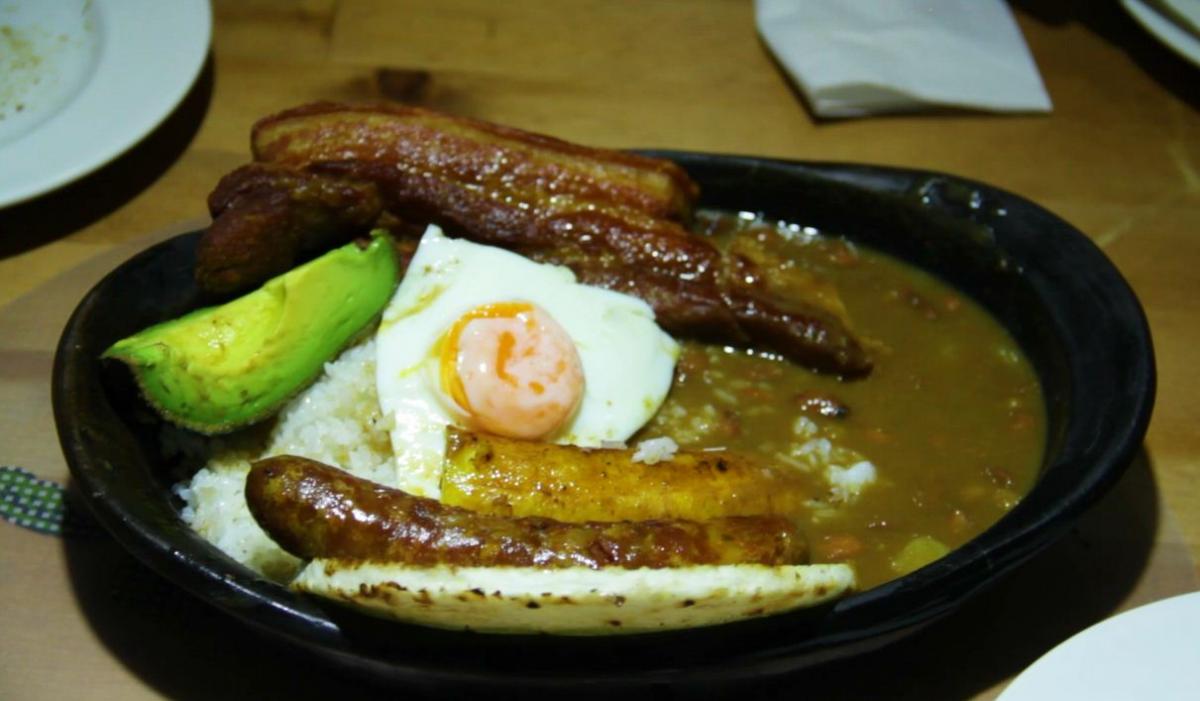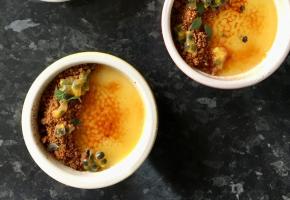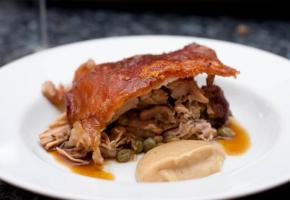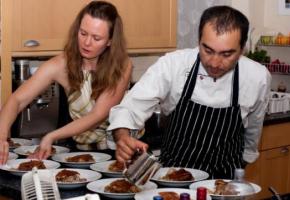For any Londoner walking through Elephant and Castle, the presence of Latin America culture is tangible. It weaves its way around the corporate likes of Tesco, Boots and Pret and imposes its position in the area’s quirky cluster of independent retail units.
Elephant and Castle’s Latin quarter has been the beating heart of London’s Colombian community for over 20 years – the city’s second largest Latin American following closely behind the Brazilian. Most of the area’s 80-strong retail cluster is owned by Colombians, be it a carpet and flooring retailer, a fashion and beauty emporia, a money transfer shop or a skills advice agency.
But when it comes to Colombian food, the offerings are endless. Whether it’s grabbing an empanada or papa rellena from the vendors on the fringes of the shopping centre, a late-night espresso in one of the cafes under the railway arches or a carb-fuelled feast at the established La Bodeguita, the area is brimming with the flavours of Colombia.
The Colombian Food Tour, founded by Doreta Lorekis, offers foodies from all over the opportunity to discover this unique alcove of Colombian cuisine all in one go. Now in its third year, the gastronomic tour introduces outsiders to the cornerstones of Colombian cuisine in the area’s long-standing cafes, restaurants and bars.
The tour, which runs one Saturday evening a month, lasts three and a half hours and covers up to seven locations around the Elephant and Castle area. Founded by Doreta to spread awareness of UK charity Children Change Colombia, the tour aims to change perceptions of Colombian culture beyond its stereotypes to a fully-fleshed representation with an indulgent cuisine to its name. “There are a lot of carbs in Colombian cuisine,” Doreta laughs. “It’s like a carbs fest”.
Doreta explains the benefits of educating people on Colombia’s rich cultural history. “It’s a fantastic opportunity to meet people and break the ice through food, but we don’t just eat food,” Doreta says. “I talk all about the culture: the people, the traditional festivals, the popular travel destinations and so on. It’s about finding a balance between presenting all the amazing stuff that Colombia has to show at the same time as mentioning the challenges that the country is going through.”

Doreta kick-starts the tour at 5 pm at La Caleñita with the Colombian equivalent of afternoon tea and cake. First, buñuelo, a fried dough ball made with cornmeal and small curd white cheese. This is paired with pan de bono, cheese bread made with corno meal, cassava starch, mild Colombian cheese and eggs, and almojabana, another form of cheese bread made with cornmeal, cottage cheese, cuajada - fresh white cheese made with non-pasteurized milk - eggs and milk. These are washed down with a glass of chocolate caliente: “In Colombia we drink chocolate more than we eat it. So, I pair the cheese bread with the Colombian style of hot chocolate, made of cocoa, panela and spices.”
Next on the menu is Arepa de choclo, a sweet, cheesy pancake made with sweet corn on a hot griddle, and bocadillo veleño, Colombian confectionary made with guava and panela – and also considered a cultural symbol for Colombia.
Something those who are unfamiliar with Colombian cuisine may not know is the country’s wide range of fruit and the large role it plays in the diet. “We have the most amazing exotic fruit,” says Doreta. “In Europe so many snacks and pastries are filled with chocolate, but in Colombia, we fill it with fruit, such as guava.”
Something else non-Colombians may not know? “We also drink a lot of fruit juice because there is such a great variety of tropical fruits in Colombia. So instead of a soft drink, many Colombians eat lunch with juice.” Luckily, guests on the tour get to try authentic Colombian fruit juice: Jugo de guanábana - a natural fruit juice made with guanábana and milk - and the Jugo de lulu - a subtropical plant juice mixed with water.
What follows is Doreta’s all-time favourite Colombian dish: empanadas. These deep-fried corn pastries are the traditional street food staple and on the tour, there’s the chance to try empanadas de carne filled with meat, vegetables and potato.
But what makes the Colombian food special and unique from Brazil, Mexico and Peru? “It’s down to the warmth and the spirit of the Colombian people,” says Doreta. “At the end of the day, you can be eating the most delicious dish, but if it’s served by someone cold and unfriendly, you just don’t get the same experience.”

“Ultimately, the people are the protagonists. In so many of the places we go to, it’s as if your grandmother or your mum has prepared the food.” Doreta pins this down to a certain magic which underlies the area. “It’s this feeling. It’s a warm and comforting atmosphere that the people have managed to create here.”
Doreta hopes, through face-to-face interaction with the traders and their craft, to bridge the gap between disparate communities. “When people come on the tour, they see all these places where Colombians are working and frequenting. They really get a vibe.” A few have shared their inspiring stories on how they got here with Doreta. “The owner of the restaurant La Barra is an amazing woman who has this crazy story. She arrived in London a few years ago, serving Colombian coffee in stations straight from her backpack. She then managed to get her own tiny space in the Elephant and Castle area selling empanadas, and soon after she was able to get her own restaurant, cooking her own home-made food. She came here on her own and worked her ass off.”
After empandas guests are offered sancocho, a chicken soup with corn, potato, cassava, plantain and spices. Sancocho prepares tour-goers for the main event, the all-embracing platter bandeja paisa: white rice, red beans, ground beef, plantain, chorizo, morcilla, chicharron, arepa, avocado and a fried egg. For those with a lingering sweet tooth, dinner is finished off with arequipe con queso, made with milk caramel with cottage cheese.

With appetites sated and bellies fit to burst, the tour ends with a round of aguardiente shots – the anise-flavoured national beverage – at the famed La Bodeguita. “It’s considered an institution in the area,” says Doreta. “It’s definitely a sociable, interactive experience. One time there happened to be a birthday party and a large group of Colombians were dancing. It was something you’d experience if you were in Colombia, so it was a really authentic experience for them.”
Doreta is aware that many locals to the area are disengaged with the Latin American community. “So many people living in this wider area had no idea that this world existed – they felt like they were tourists in their own city.”
In recent years, The Elephant and Castle area has also become a hotly debated topic following the controversial plans to demolish the shopping centre. The large development was built in 1965, and it was the first covered mall in Europe. Over the years which followed, a microcosm of Latin America formed, and its remained in South London’s patchwork of communities ever since.
Though news of the shopping centre demolition has floated through the area for several years, the plans were given a final approval in December. “I would hope for the community to stay, whatever that means. Maybe there is still a way for them to stay here,” Doreta says quietly.
In a controversial move by Sadiq Khan to regenerate the area, the backlash from the Latin American community can be felt. “Destroying the London we love” and “Screw all property developers” lingers on the walls of the shopping centre in cloudy white paint. Questions surrounding the re-housing of the many independent businesses, some of which have been operating for 20 years, also remain unanswered.
“As the area continues to gentrify itself and as rents continue to rise, people will have to move,” Doreta laments. “Unless they manage to make their businesses attractive not just to Colombians but to the locals in the area.”
However, reflecting on the changes she’s observed since creating the tour, Doreta believes the area has attracted trade from a wider demographic. “The other day, one of the restaurant owners tour told me he’s translated his menu into English because more and more non-Colombians were visiting.”

Though the future for the community is unclear, Doreta hopes that despite the demolition the Colombians will stay as vibrant and strong as ever. “The big thing I’ve noticed is how united and how strong this community is. It’s like a home away from home. To have a place where people have built their homes where their businesses and their livelihood depends on it, of course this community is integral to the area.”
Locations on the tour: La Chatica shop, Aroma De Café, La Chatica, La Barra, La Bodeguita
Unfortunately, in light of the up coming works in Elephant and Castle, and lack of resources, Children Change Colombia have decided to stop running the tours. Hwoever, if you would like to support Children Change Colombia visit https://www.childrenchangecolombia.org and if you would like to suport the Latin American community in Elephant please visit https://latinelephant.org



















